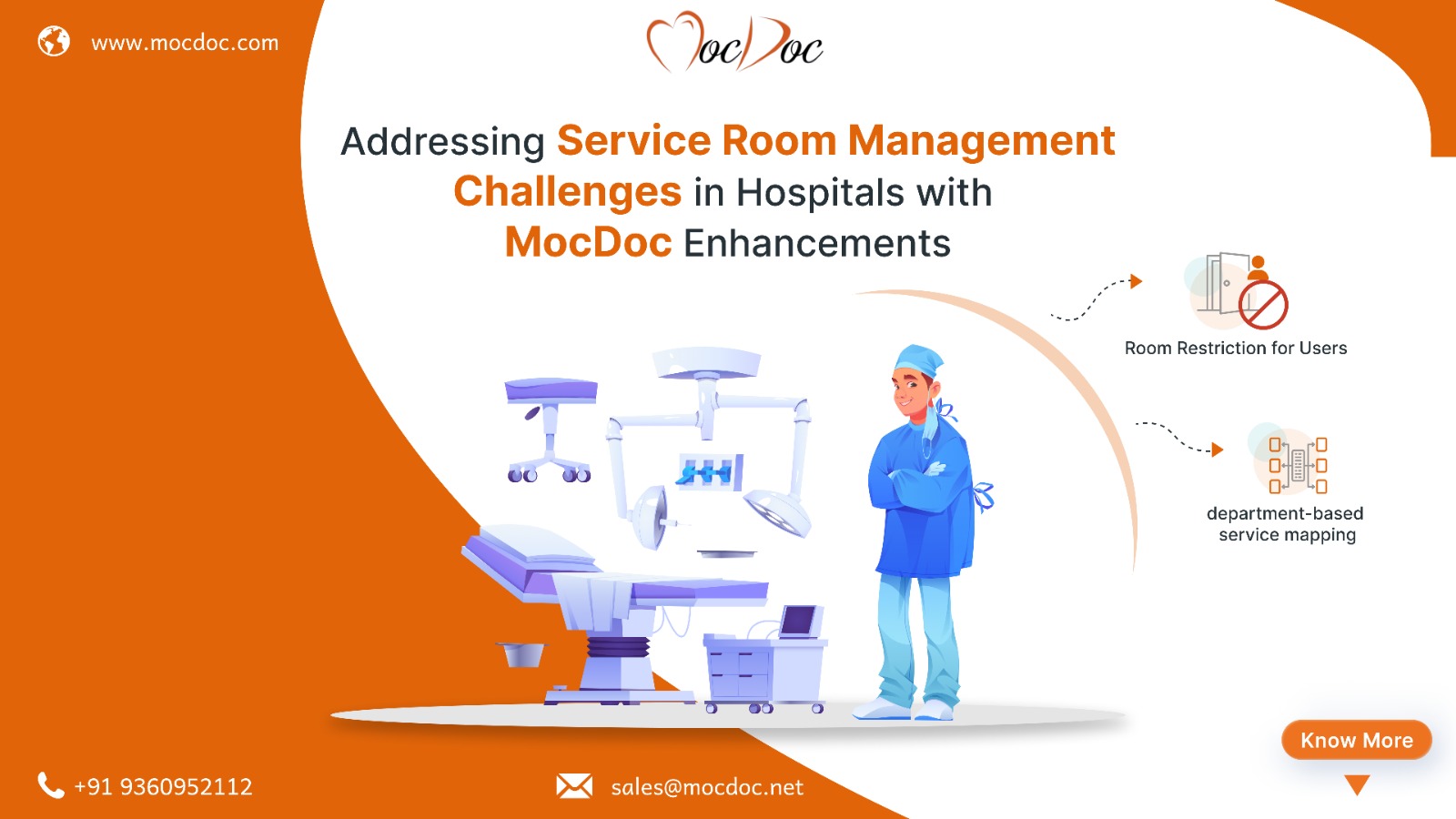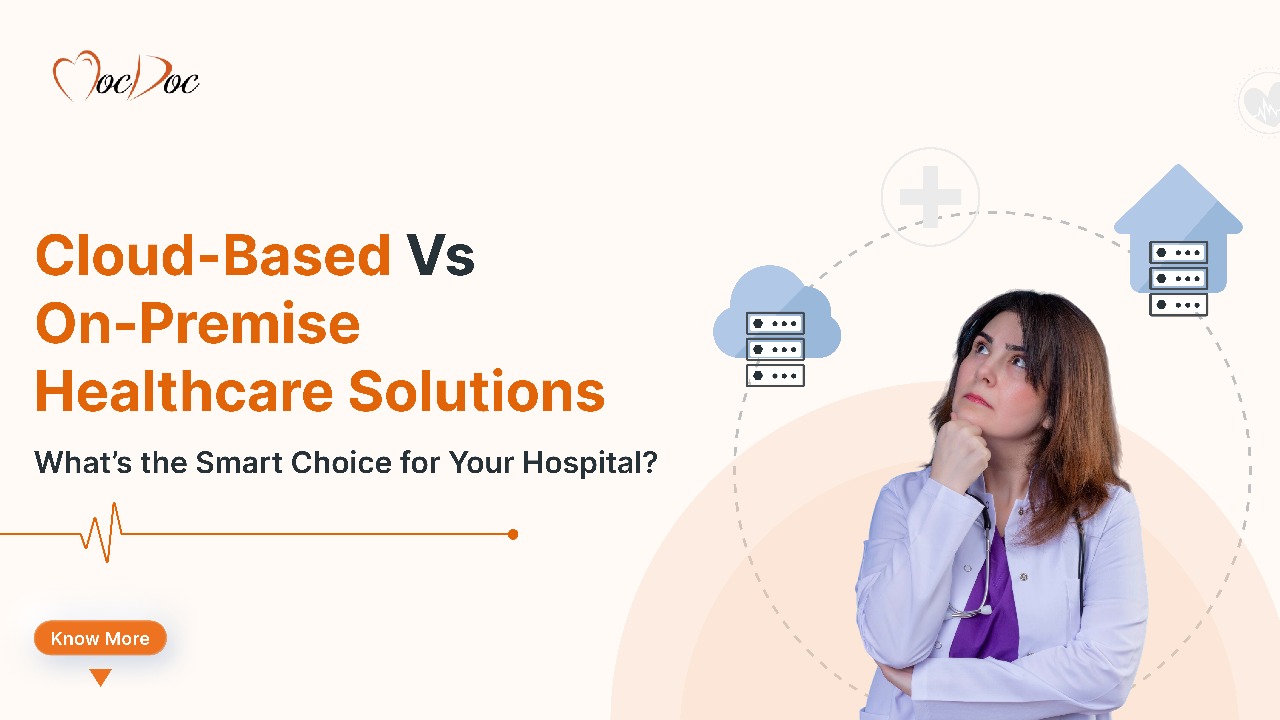2024120913:22:12
Addressing Service Room Management Challenges in Hospitals with MocDoc
Published by: Mohammed Siddiq

Managing service rooms in busy hospitals is no easy task. From ensuring proper access control for staff to accurately mapping services within each room, the process often poses significant challenges. Recognizing these pain points, MocDoc has introduced two powerful enhancements to its Service/Procedure Management Module to simplify workflows and boost operational efficiency.
1. Room Restriction for Users
Challenge: Previously, all users in the service management screen had access to every service room in the hospital, regardless of their role or responsibilities. Although a drop-down filter was available to narrow down room selection, it still allowed users to view and interact with unrelated rooms, potentially leading to confusion or inefficiency.
Solution: To address this, we’ve introduced the Allowed Service Rooms/Room Restriction feature while creating a user profile. This feature enables administrators to define specific room access for individual users based on their roles.
How It Works:
- Assign specific service rooms to each user during their profile setup.
- For example, an X-ray technician can be restricted to access only the X-ray room.
- When this user logs in, the service management screen will automatically display only the X-ray room and the relevant orders or patient information.
Benefits:
- Eliminates the need for users to select their room manually via drop-down filters.
- Prevents unauthorized or irrelevant access to other rooms, ensuring confidentiality and role-based efficiency.
- Simplifies the user interface for staff, enhancing focus and productivity.
2. Department-Based Service Mapping in Room Creation
Challenge: Previously, users had to manually add each service being performed in a room, which was time-consuming and error-prone, especially in departments with extensive service lists.
Solution: To streamline the process, we’ve added a new Department field in the room creation screen. By selecting a department, all services associated with that department are automatically included in the room.
How It Works:
- When creating or editing a room, the user selects the department (e.g., Radiology, Physiotherapy).
- All services linked to the chosen department are auto-populated in the service list.
- Users can remove any unnecessary services that do not apply to the room before finalizing.
Benefits:
- Reduces manual entry, saving significant time during room setup.
- Ensures accurate mapping of services to rooms, minimizing human error.
- Enhances flexibility by allowing users to customize service lists as needed.
Key Impact of These Enhancements
These updates bring meaningful improvements to the Service/Procedure Management Module, benefiting healthcare facilities in several ways:
- Improved Workflow Efficiency: Staff can focus solely on their designated responsibilities without distractions from irrelevant information. Administrators save time during room setup and user creation processes.
- Enhanced User Experience: Simplified service management screens reduce cognitive load for staff, ensuring faster navigation and task completion.
- Greater Control and Security: Role-based access ensures sensitive information is visible only to authorized personnel, improving compliance and data protection.
- Operational Accuracy: Automated service mapping eliminates errors and ensures rooms are configured correctly for their intended use.
Conclusion
The introduction of room restriction for users and department-based service mapping marks a significant step forward in making MocDoc's Service/Procedure Management Module more intuitive and efficient. These enhancements reflect our commitment to addressing real-world challenges faced by healthcare providers, enabling them to focus more on patient care and less on administrative complexities.
Experience the difference with MocDoc’s latest updates. Streamline your workflows and empower your team today!
The Functional and Nonfun...
Hospital Management System is used to take the data from the .....
Published by: Sanjana
2025101609:06:21
How HMS improves the qual...
Hospital Management Software is considered to be the cur.....
Published by: Sanjana
2025101609:03:52
Cloud-Based vs On-Premise...
In today's fast-evolving healthcare environment, choosing the.....
Published by: Mohammed Siddiq
2025101516:15:23
Effortlessly Track Patien...
Managing hospital expenses efficiently is critical for financ.....
Published by: Mohammed Siddiq
2025101517:13:35






